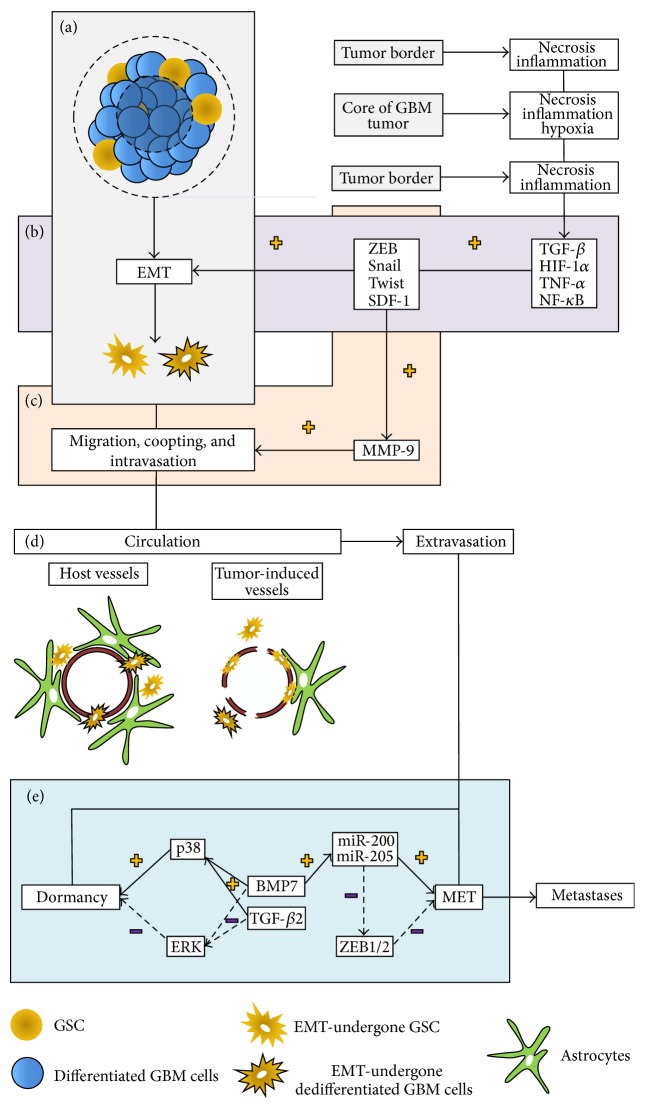Figure 1.
Insights on GBM dissemination process. Both GSC and differentiated cells can undergo EMT in order to invade the brain parenchyma. This process is regulated by different transcription factors including ZEB, SNAIL, Twist, or NF-κB that are activated upon several environmental conditions (inflammation, necrosis, and hypoxia) ((a) and (b)). This consequently results in the acquisition of mesenchymal properties and the expression of ECM degrading enzymes in order to favor tumor spread. This process also sustains intravasation, leading to systemic dissemination ((c) and (d)). Tumor blood vessels are usually incomplete and leaky, therefore favoring intra-/extravasation (d). In pathological conditions, the BBB is often disrupted, facilitating GBM cells to jump in the blood flow as well (d). When tumor cells extravasate, they may either become quiescent or develop metastases. This balance is tightly regulated by environmental conditions and factors including BMP7 or TGFβ2 among many others which may induce either dormancy or a switch toward MET and metastases (e).

